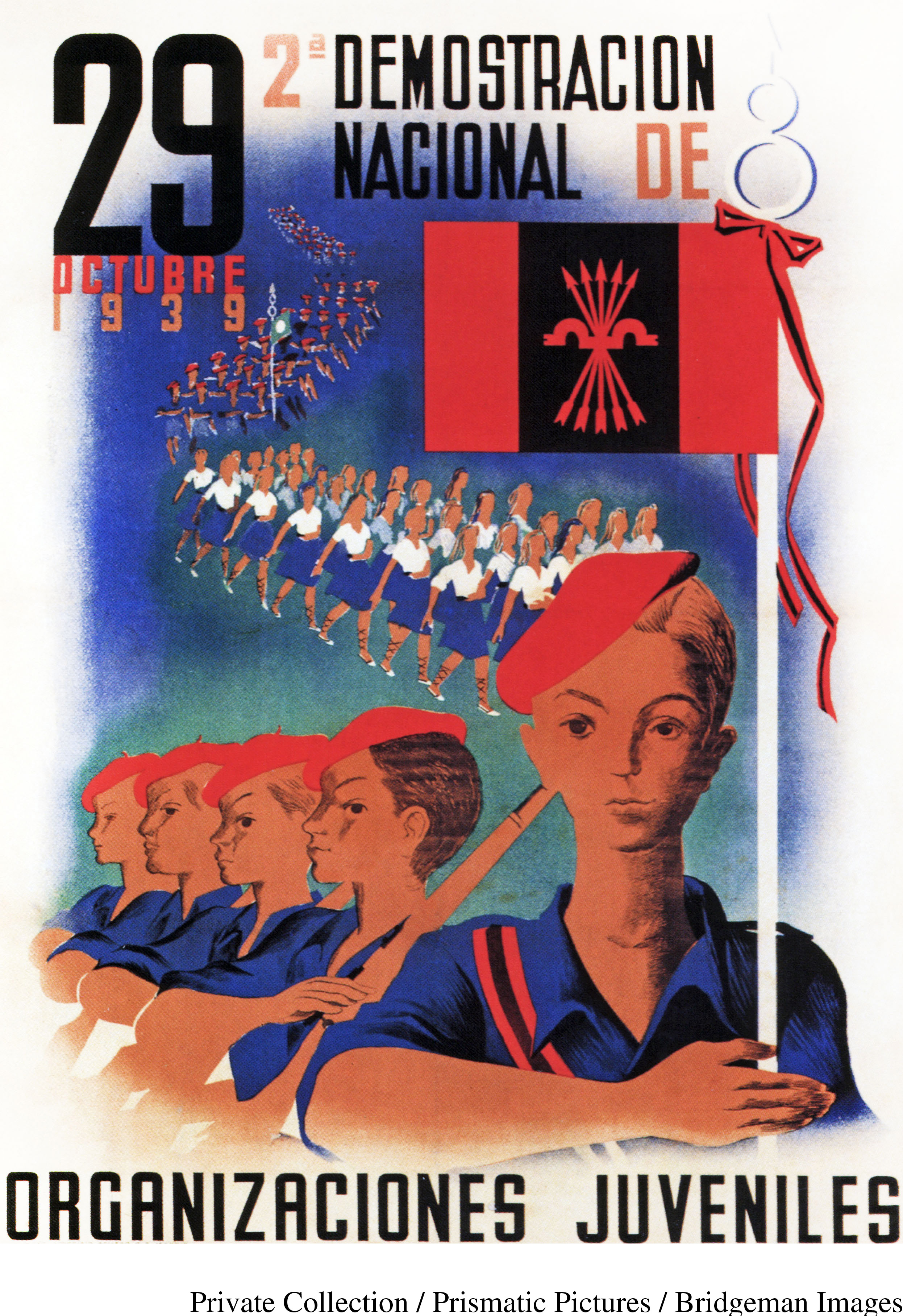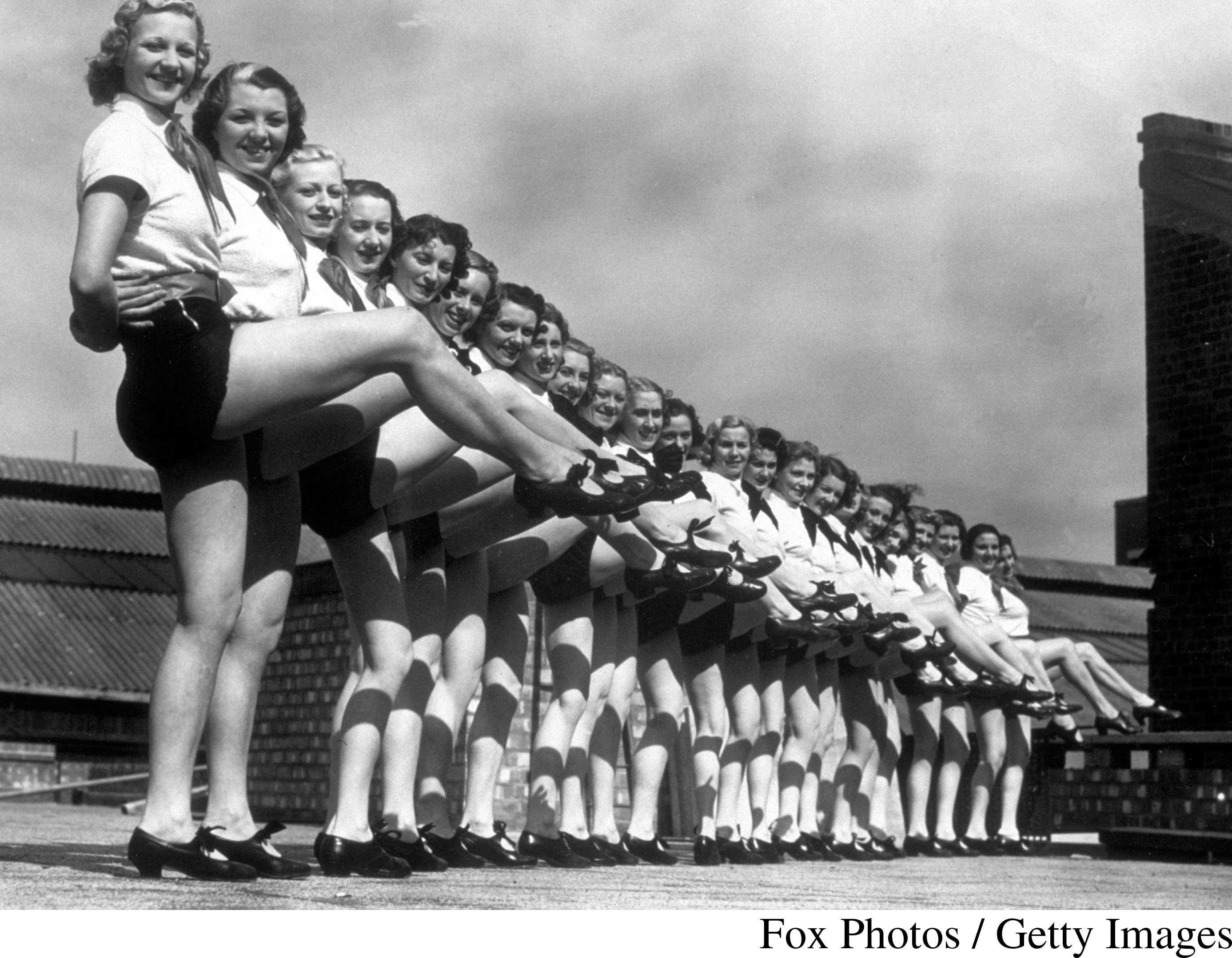Seeing History: Militarization of the Masses
Printed Page 897
Important Events

World War I dramatically changed people’s lives, especially in regard to creating a more standardized, mass society. One aim of this and following wars in the twentieth and twenty-first centuries was to bring all people of a nation to think the same way about the war and have the same patriotic thoughts about the nation. Because of rationing, types of textiles and clothing became more standardized and the kinds of food people could eat were limited. Standardization was part of wartime militarization, enduring into our own times.
People became fitter, playing sports and displaying trim, war-ready bodies—men and women alike. Women dancers in the interwar years took up the militarized form of dancing based on kicklines and uniform costumes. The Tiller girls, shown practicing in the photo, were a dance group of long standing that came to the militarized style that made them so popular. There were many other dancers who formed chorus lines and drill teams. They appeared both in musicals on stage and on the screen and were popular across the West.
All sorts of groups did synchronized gymnastics to get fit: boy scouts, socialist union workers, mothers’ groups, and an array of youth groups such as the Boy Scouts or, as in the poster, youth group affiliates of political parties. The poster advertises the youth sections for boys and girls of Francisco Franco’s Falange Party in Spain after his victory over the republican forces. These Spanish young people marched in unison, wearing identical uniforms and keeping in step, as did the young people’s groups in Italy, Germany, and the Soviet Union. The Black Shirts in Italy and the SA in Germany were prime examples of adult male militarization in peacetime.
Questions to Consider
- Analyze the appeal of uniforms, drill, and precision bodily movements in the 1920s and 1930s, and explain their relationship to World Wars I and II.
- Analyze the importance of this militarization to the appearance and growth of Nazism and fascism across the West.